The towering face of Kailash reminded us that we were but insignificant participants in a pilgrimage ritual that has played out over millennia for people of four major religions -- Hinduism, Buddhism, Jainism and Bon, notes Sonia Trikha Shukla.
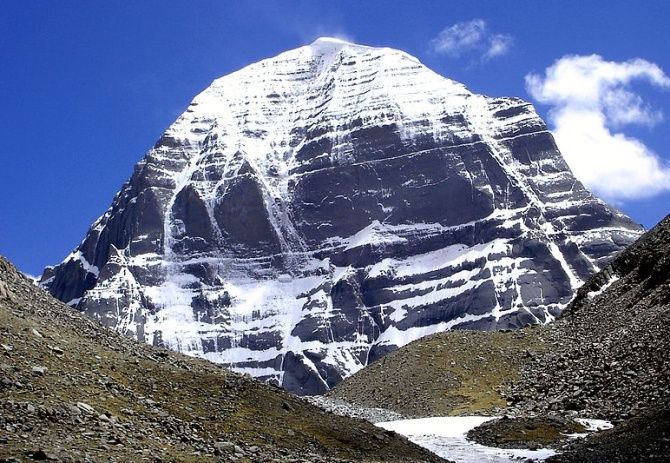
It felt like I was standing naked before the gods. I had woken up before first light and gone out into the biting cold to see if I could catch a glimpse of Mount Kailash and make a prayer for fair weather for my journey.
It was the most daunting day of my Kora, the four-day, 52-km circumambulation of Kailash.
Today, over the course of 18.5 km I would climb 1,900 feet through the Hla Chu valley to the highest point at Dolma La Pass (18,500 feet), and then make a steep, 2,600 feet descent into the Dzong Chu valley.
Campfire reports had it that everyone attempting the Kora over the past few days had been turned back by rain and sleet.
So here, on my day of reckoning, I stood facing the abode of Shiva and Parvati and prayed for protection from the numbers and the faith to carry me across. It nearly worked.
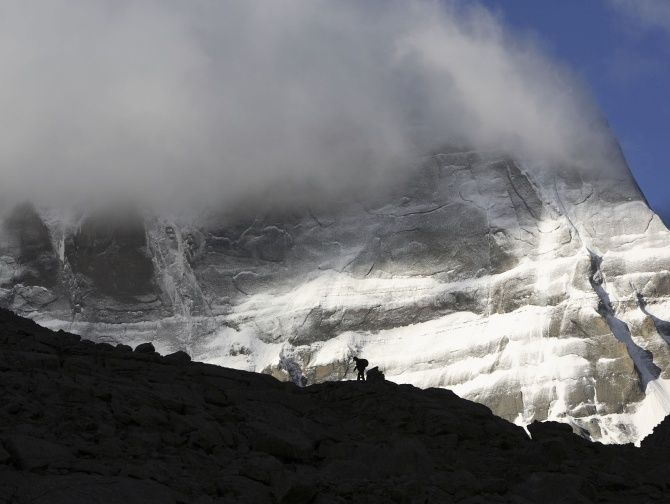
After months of planning, expedition leader Milan Moudgill had put together a group of 15. Ten days earlier, we had all met in Kathmandu and begun our journey to the far west of Tibet.
On a trek to Kailash, it's good to have God on your side but, eventually, it is your gear that will save you.
My checklist included food and drink, a down jacket, rainwear and sunscreen.
First blow: Milan fell sick and could not finish the Kora with us.
Another member was felled by the high altitude, and our group of 15 was down to 13. But our dismay gradually changed to a giddy optimism as we began our trek.
The road outside the rest house in Diraphuk was full of brightly caparisoned ponies and Tibetans leading their charges.
Pilgrims gathered in the courtyard, chanting "Har Har Mahadev". Some were from the Chinmayananda Ashram, others from the Isha Yoga Centres, and there was our less devout crowd of trekkers.
Celebrity preacher Sadhguru Jaggi Vasudev was there too, but he seemed to have travelled a great distance to spend time in his large tent.
Days of rain had let up to unveil a clear view of Kailash, a wisp of cloud wrapped jauntily around the mountain like a muslin scarf.
Most pilgrims were on horseback. That meant we would have the path to ourselves.

We began the climb across a moss-and-stone mountainscape, dotted with cairn-like stacks of piled up stones.
All along the climb, till just before Dolma La, the towering north-eastern face of Kailash reminded us that we were but insignificant participants in a pilgrimage ritual that has played out over millennia for people of four major religions -- Hinduism, Buddhism, Jainism and Bon.
Also evident was a Chinese miracle -- our mobile phones had almost uninterrupted connectivity.
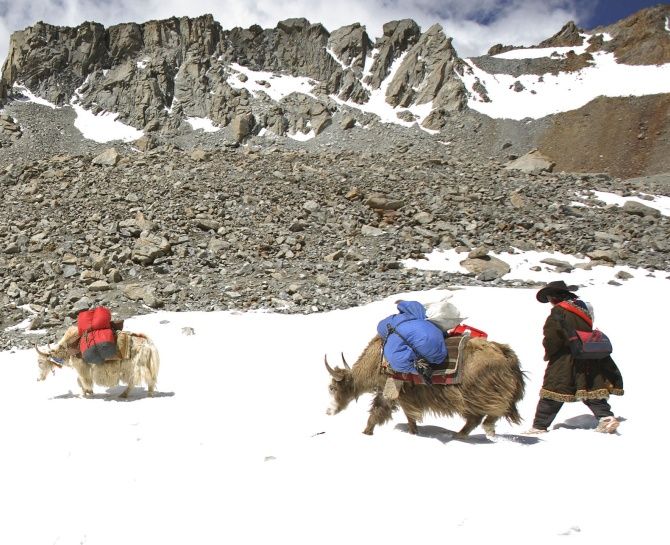
As I climbed onto Dolma La -- the Buddhist name for Parvati -- the sight before me took away what little breath remained in my lungs.
The entire pass was covered in rows upon rows of gaily coloured prayer flags laid out over the snow; a smoking white urn gently gave out the smell of juniper.
I paused to take it in, only to be reminded by the locals that the air here is so thin, I was stopping at my own peril.
The strain on my lungs quickly gave way to a knee-wrenching descent.
From the emerald pools of Gauri Kund, it was all downhill -- literally and figuratively. The excitement abated and fatigue took over as we walked the last 10 km.
There is only one point on the descent from where we could see stunning Kailash, but we hardly paused, acutely aware of the distance that still lay ahead.
We had walked over 12 hours when we reached our Zurthulphuk camp at 9 pm.
I was too tired to celebrate, but my co-trekkers who had arrived earlier cheered and massaged us back into good humour.
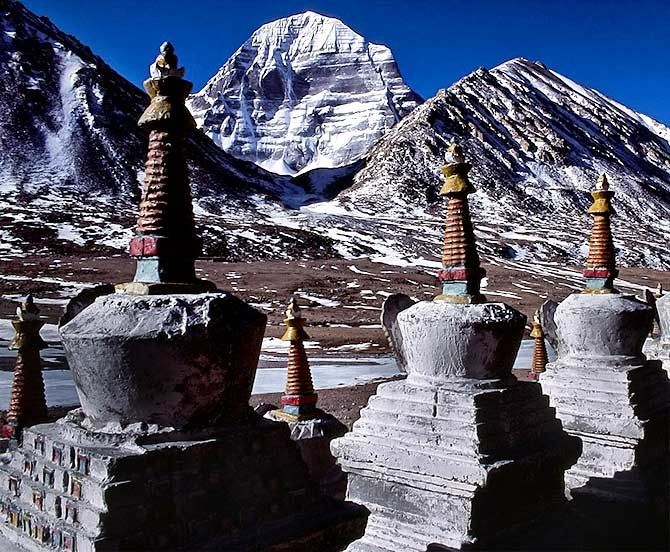
The final day of the Kora was a relatively short 6 to 7 km walk flanked by ponies and yaks making their way down keeping time with their musical bells.
The perfect moment to reflect on how I had made it this far.
Back in Nepal we had quickly realised that the monsoon was not the best time to be here.
Two landslides and a day later than expected we had finally crossed the border into Tibet. Two days of acclimatisation had been reduced to an overnight halt.
All next day, we drove through a magnificent landscape towards Saga -- at over 15,000 ft, our first high-altitude challenge.
I was first to be hit by the dreaded acute mountain sickness (AMS), wondering through my nausea and headache whether I would only see Kailash on a helicopter evacuation.

Two nights of acclimatisation, the ministrations of my fellow travellers and gallons of warm water later, I was weak but ready to continue.
Next day, the first sight of Lake Mansarovar, with its iridescent waters, and the first views of Kailash nestling in the clouds, were enough to motivate me onward.
Mansarovar has many religious and mythological connotations, but it is also one of the largest and most spectacular freshwater lakes in the world.
The day after we arrived at Mansarovar, I climbed 9 km some way up the 18,000 feet hill feature called Thubba Ri. It afforded a mind-blowing view of the sun-dappled lake with every shade of blue imaginable.
Living conditions along the route are dormitory-style rooms with grubby outhouses that serve as toilets.
Food is served in the China-India Pilgrim Service Centres and consists largely of spicy versions of dal and rice with some vegetables. Hardly appropriate fare for a tough trek, but we were carrying energy bars and theplas.
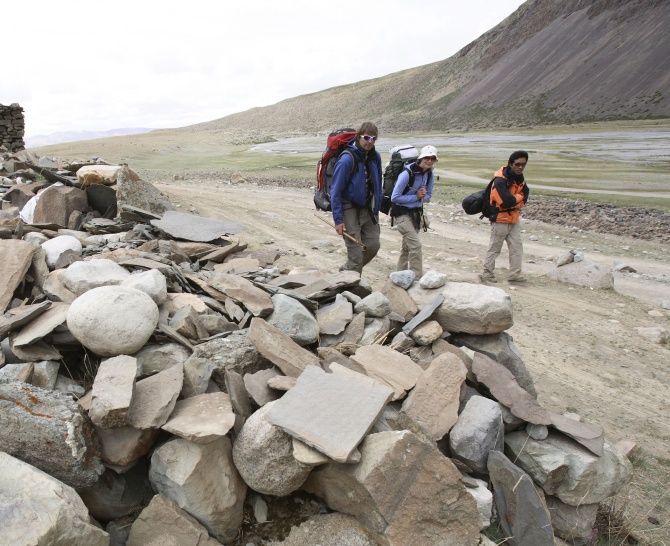
Darchen is a large village at the foot of Kailash from where the Kora begins.
A short drive took us to Yam Dwar -- gates of the God of Death -- where we alighted to begin the 13 km walk that is Day One of the Kora.
It was expected to be an easy walk through the wide and green Hla Chu valley, flanked by stone cliffs and an ancient monastery.
But the gentle rain soon turned into a raging hailstorm, chilling us to the bone before we staggered into the rest house at Diraphuk.
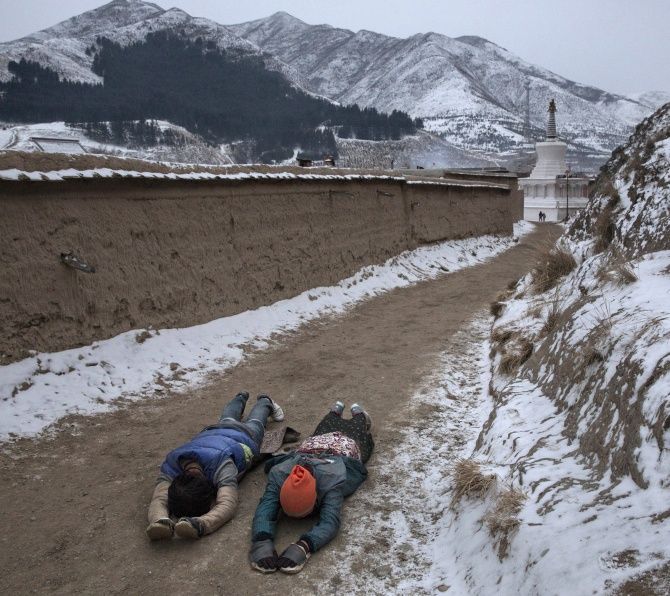
Unlike most pilgrims, our itinerary included another acclimatisation trek on Day Two before we attempted the Dolma La pass.
This involved walking five hours on the moraine of a small glacier that comes off the north face of Kailash. The continuous ascent is a tricky walk over loose rock, but it was a useful conditioning exercise.

We had all driven ourselves hard but there were others who perform an even more devout Kora -- taking 13 days to prostrate their way around Kailash.
Every day spent within sight of Mount Kailash is a stirring reminder that those who worship here consider this the Axis Mundi of the universe, a point of connect between the celestial and geographical worlds.
For the more scientifically minded, there is the geographical wonderment of being at the headwaters of four major Asian rivers -- the Sutlej, Indus, the Yarlung Tsangpo and Karnali.
The bewitching Mount Kailash draws thousands to its 52-km Kora, but none of the world's mountaineers has yet scaled its 21,778 feet.
Even that notoriously hard-nosed community believes in leaving it to the gods.











